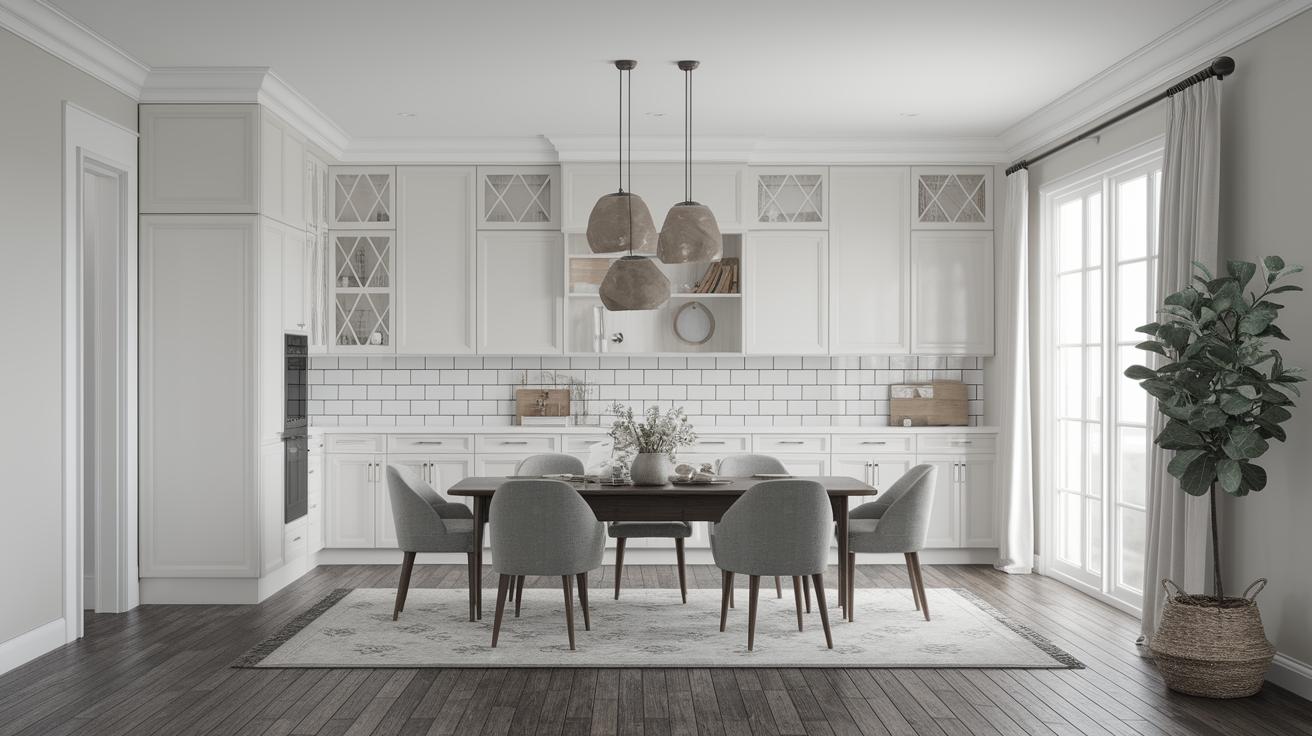How to Budget for a Home Renovation
Embarking on a home renovation can be both exciting and daunting. Understanding how to budget effectively is critical to ensure you stay within your financial limits while achieving your dream home makeover. This article breaks down essential considerations, from planning and prioritizing to evaluating skills and securing permits. Whether you’re taking a DIY approach or hiring contractors, we’ll offer practical tips and guidance on making informed decisions. By following this comprehensive guide, you’ll be well-equipped to manage expenses, optimize your renovation project’s success, and turn your vision into reality.
Developing your plans
The first step in budgeting for a home renovation is developing a detailed plan. Start by assessing your current home space and identifying areas that need change or improvements. Creating a rough sketch of your desired layout and design can provide clarity on the extent of the renovation.
Consider consulting with architects or interior designers who can provide valuable insights and help refine your ideas into practical plans. Professional input may seem like an added expense, but it can streamline the renovation process, reducing costly mistakes and ensuring you achieve your design objectives.
Worksheets
Using worksheets to track your budget can keep your renovation project organized. These documents are helpful tools to monitor expenses and ensure that every aspect of the renovation is accounted for. Prepare an itemized budget sheet listing all potential costs, including materials, labor, permits, and contingency funds.
Regularly updating your worksheet with actual costs versus estimates will help you stay on track and make necessary adjustments before costs spiral out of control. Digital tools and apps can enhance this process by automatically calculating totals and sending reminders for upcoming payments.
What do you want to change?
Determining what you want to change in your home is crucial for setting a realistic budget. Separate your needs from your desires, focusing initially on necessary repairs or updates, such as fixing structural issues or outdated systems.
Once necessities are addressed, you can allocate funds to style and convenience upgrades, such as modern fixtures or aesthetic improvements. This approach helps ensure that critical problems are solved within budget constraints before segueing into optional luxuries.
Defining goals and setting priorities
Define clear goals for your renovation project to establish priorities. Are you updating your home to increase its market value or creating a more comfortable living space? Your objectives will guide your financial decisions and influence which areas receive more focus and funds.
Rank your priorities, giving precedence to projects that align with your primary goals. Understanding what matters most will facilitate decisions when budget cuts or compromises become necessary, helping maintain a satisfying renovation outcome.
Your Wish List
Create a wish list detailing all the changes you’ve envisioned for your home. This list should include both essential upgrades and more extravagant dreams. Arranging items according to priority will help you identify which aspects of your renovation to begin with.
In some cases, certain items from your wish list may need to be postponed if they exceed the budget. However, keeping this list handy ensures that when the opportunity arises or budgets allow, you can readily incorporate desired features in the future.
Tips for keeping within your budget
One effective way to stay within your budget is to source materials and services locally. Local providers often offer competitive pricing, reduced shipping costs, and may be more flexible with negotiations.
Another tip is to allocate contingency funds for unexpected expenses. Labor overruns or unforeseen issues, like faulty plumbing, can arise during renovations. By setting aside 10% to 20% of your budget for contingencies, you can confidently address surprises without derailing the overall project.
Do you have the necessary skills?
Assess whether you possess the required skills for DIY renovations. While doing it yourself can reduce labor costs, it may result in higher expenses if outcomes are subpar or if corrective professional help is needed.
Be honest about your abilities, perform thorough research, or take training if necessary, before committing to DIY projects. If you lack confidence, consider hiring skilled labor for tasks beyond your expertise, ensuring quality results.
Do you need a building permit?
Securing the appropriate building permits is critical for compliance with local regulations. Different areas have varying requirements, and failure to obtain necessary permits can lead to fines or work stoppages.
Consult your local municipality during the planning phase to understand which permits are needed for your renovation. Accounting for permit fees in your budget can help avoid delays and additional costs resulting from non-compliance citations.
Do you have the time?
Time is a crucial factor in any renovation project. Consider whether you can dedicate sufficient time for planning, managing, and overseeing the renovation without compromising other personal or professional commitments.
If time is limited or conflicting schedules emerge, hiring a project manager or foreman can ensure the renovation proceeds smoothly and efficiently. Professional management might be worth the expense, providing peace of mind and timely project completion.
Do you have the tools and equipment?
Having access to the right tools and equipment is essential for successful home renovations. Make an inventory of the resources you already have and compare it against what will be necessary for your planned projects.
Renting or borrowing tools can be more cost-effective, especially for one-time use. Consider community tool libraries or rental services to avoid investing heavily in expensive equipment that may only be used occasionally.
How do the rest of your household feel about it?
Consult all household members before initiating renovations. Home improvements impact everyone in the residence, and their input can provide different perspectives on priorities and desired changes.
Reaching a consensus reduces potential conflicts and ensures that the renovation meets the needs and expectations of the entire family. Engaging the household early on fosters a sense of ownership and satisfaction with the final results.
If you’re doing it yourself to save money – get a second opinion to be sure you are saving
If DIY is your plan to cut costs, seek a second opinion from experienced renovators or professionals to verify potential savings. Sometimes, initial savings can lead to expensive corrections or replacements later.
An objective external assessment can highlight hidden pitfalls, advising on whether a professional might ultimately deliver a more cost-effective and satisfactory outcome. Balancing DIY enthusiasm with expert advice is crucial to wise financial management.
Types of Contractors
Understanding the types of contractors is essential for selecting the right professionals for your renovation project. General contractors oversee the entirety of the renovation process, coordinating various specialists and trades.
Alternatively, specialty contractors focus on distinct areas such as plumbing, electrical work, or carpentry. Depending on your needs, choosing between general or specialty contractors allows you to customize professional involvement, optimizing costs and efficiency.
Final thoughts
| Step | Summary |
|---|---|
| Developing your plans | Assess and sketch ideas, consider professional consultations. |
| Worksheets | Use for organizing and tracking expenses. |
| What do you want to change? | Distinguish between needs and desires. |
| Defining goals and setting priorities | Outline primary objectives and prioritize projects. |
| Your Wish List | List all envisioned changes, prioritize opportunities. |
| Tips for keeping within your budget | Source locally, allocate contingency funds. |
| Do you have the necessary skills? | Evaluate DIY capabilities before proceeding. |
| Do you need a building permit? | Check local regulations and secure necessary permits. |
| Do you have the time? | Consider personal time constraints, hire management if needed. |
| Do you have the tools and equipment? | Inventory or rent tools as needed. |
| How do the rest of your household feel about it? | Consult with household members and reach consensus. |
| If you’re doing it yourself to save money | Seek a second opinion to confirm actual savings. |
| Types of Contractors | Choose between general and specialty contractors. |


